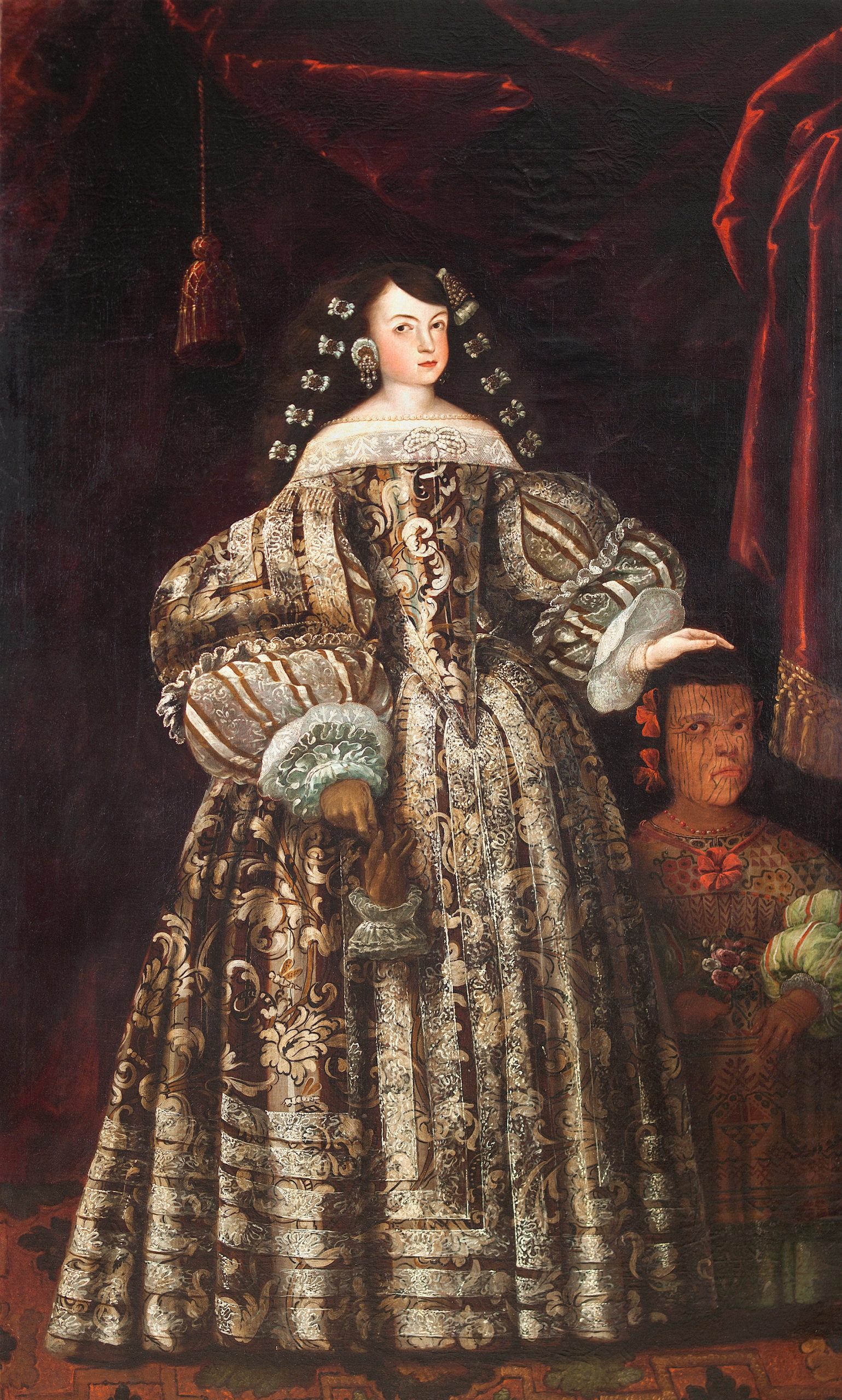Recently recovered from the storerooms of the Prado Museum and exhibited at the Museum of America in Madrid, this intriguing baroque portrait reflects the courtesan intimacy of two women, a noble Hispanic infanta who has just come of age as a lady, and her native Chichimec dwarf. The portrait, which was made around 1670, appears to have been painted precisely to announce her new status as a lady of María Luisa de Toledo. The presence of a tattooed native woman dwarf incarnates the power and prestige of the family and its calm dominion over the New World. The viceroy’s court followed the Madrid court’s fashion of sabandijas or diminutive companions endowed with unusual physiognomies. These persons performed symbolic roles as ‘deforming mirrors’ (espejos deformantes) that reinforced the qualities of the nobles, princes and kings with whom they cohabited. The portrait was among the personal possessions that accompanied our lady until her death in 1707 in the Convent of Constantinople in Madrid.
Mexican portrait
Portrait of Lady María Luisa de Toledo and anonymous native companion. Attributed to Antonio Rodríguez Beltrán, Viceroyalty of New Spain, c.1670. Oil on canvas, 209 × 128 cm (courtesy of Museo de América (MAM 2016.06.01), on loan from the Museo Nacional del Prado; photo by J. Otero)
Andrés Gutiérrez Usillos
Further reading
- Álvarez Lopera, J. (2009) El Museo de la Trinidad: historia, obras y documentos, 1838–1872 (Madrid: Museo Nacional del Prado).
- Bouza, F. (1993) Locos, enanos y hombres de placer en la corte de los Austrias (Madrid: Ediciones Temas de Hoy).
- de D’Aulnoy, D. (1998) Relación que hizo de su Viaje por España la Condesa D’Aulnoy [1679] (Madrid: Tipografía Franco-Española).
- Gutiérrez Usillos, A. (ed.) (2018) La hija del Virrey: el mundo femenino en el siglo XVII (Madrid: Ministerio de Cultura y Deporte).
- Mena, M. (1986) Monstruos, enanos y bufones en la Corte de los Austrias (Madrid: Amigos del Museo del Prado).
- Moreno Villa, J. (1939) Locos, enanos, negros y niños palaciegos: gente de placer que tuvieron los Austrias en la Corte española desde 1563 a 1700 (Mexico: La Casa de España en México).





